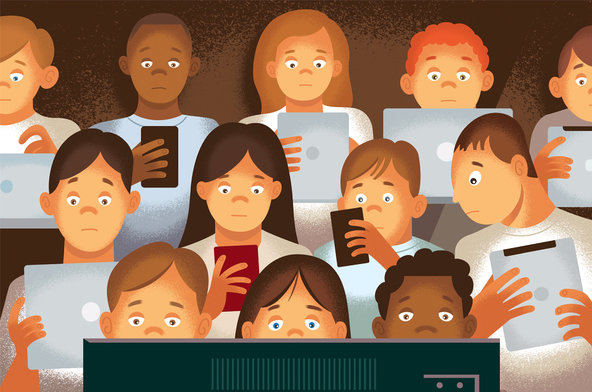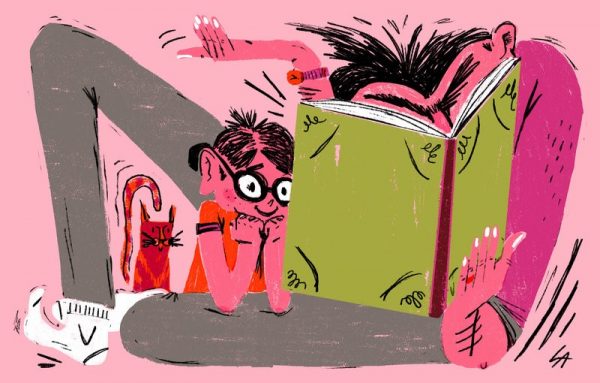Screen time versus reading time……a bit of science to support our advice
In early years, not only do we love providing parents with advice, we also deem it our duty of care towards the Hiba pupils. We enjoy providing ideas on how best to engage children with wonderful shared experiences to promote development (and simply for pleasure). Whilst we are great advocates of reading together, we also acknowledge that there is a time and place for small amounts of screen time. I recently read a fascinating article in Psychology Today entitled ‘Screentime Is Making Kids Moody, Crazy and Lazy’ (https://www.psychologytoday.com/us/blog/mental-wealth/201508/screentime-is-making-kids-moody-crazy-and-lazy?fbclid=IwAR10vdpaazKv0sM2-1acOfoZeiOvH_NFtzegC-g_fC6UG4Rdt5zrmEdatyQ). Whilst the title implies any amount of screen time has sinister outcomes, the article itself did provide a sensible and evidence-based rationale for reducing exposure:
- Screen time disrupts sleep and desynchronises the body clock.
Because light from screen devices mimics daytime, it suppresses melatonin, a sleep signal released by darkness. Just minutes of screen stimulation can delay melatonin release by several hours and desynchronise the body clock.

- Screen time desensitises the brain’s reward system.
Many children are ‘hooked’ on electronics and gaming releases so much dopamine (the ‘feel-good’ chemical) that on a brain scan it looks the same as cocaine use. However, when reward pathways are overused, they become less sensitive and more and more stimulation is needed to experience pleasure.
- Screen time produces ‘light-at-night’.
Sometimes parents are reluctant to restrict electronics use in a child’s bedroom because they worry the child will enter a state of despair, but in fact removing light-at-night is protective.
- Screen time induces stress reactions.
Both acute stress (fight-or-flight) and chronic stress produce changes in brain chemistry and hormones that can increase irritability. Additionally, both hyperarousal and addiction pathways suppress the brain’s frontal lobe, the area where mood regulation takes place.
- Screen time overloads the sensory system, fractures attention, and depletes mental reserves.
Experts say that what’s often behind explosive and aggressive behaviour is poor focus. When attention suffers, so does the ability to process one’s internal and external environment, therefore little demands become big ones. By depleting mental energy with high visual and cognitive input, screen time contributes to low reserves. One way to temporarily ‘boost’ depleted reserves is to become angry, and consequently meltdowns become a coping mechanism.
- Screen-time reduces physical activity levels and exposure to “green time.”
Research shows that time outdoors, especially interacting with nature, can restore attention, lower stress and reduce aggression. Thus, time spent with electronics reduces exposure to natural mood enhancers.
So…… what about reading?

Another wonderfully written article, ‘What's Going On In Your Child's Brain When You Read Them A Story?’ outlines research from the paediatric academic societies’ study (
https://www.eurekalert.org/pub_releases/2018-05/pas-nsm042618.php) that investigated physiological changes in the brain during different methods of delivering stories. The methods were:
- audiobook (audio only condition)
- the illustrated pages of a storybook with an audio voiceover (illustration condition)
- an animated cartoon (animation condition)
This study was undertaken using functional MRI imaging, so the researchers really
DID get to see what happened inside the child’s brain, which is pretty amazing. The lead author Dr John Hutton (research paediatrician) identified an apparent ‘Goldilocks effect’, in that some kinds of storytelling may be ‘too cold’ for children, while others are ‘too hot’ and some are just right’. And so, while the children paid attention to the stories, the MRI machine scanned for activation within certain brain networks and connectivity between the networks.
Here’s what he found:
In the
audio-only condition, language networks were activated, but there was less connectivity overall. "
There was more evidence the children were straining to understand." This was deemed to be ‘too cold’.
In the
animation condition, there was a lot of activity in the audio and visual perception networks, but not a lot of connectivity among the various brain networks. Dr Hutton identified that "
Our interpretation was that the animation was doing all the work for the child. They were expending the most energy just figuring out what it means." The children's comprehension of the story was the worst in this condition. This was deemed to be ‘too hot’.
The
illustration condition was what Dr Hutton called ‘just right’. When children could see illustrations, instead of only paying attention to the words, Dr Hutton acknowledged that
children's understanding of the story was ‘scaffolded’ by having the images as clues. "
Give them a picture and they have a cookie to work with.
With animation it's all dumped on them all at once and they don't have to do any of the work." Most importantly, in the illustration condition, researchers saw increased connectivity between, and among, all the networks they were looking at: visual perception, imagery, default mode and language.
The research concludes. That when we read to our children, they are doing more work than meets the eye. "
It's that muscle they're developing bringing the images to life in their minds." Adapted from
https://www.npr.org/sections/ed/2018/05/24/611609366/whats-going-on-in-your-childs-brain-when-you-read-them-a-story?fbclid=IwAR1yGSm-dr0BD5iBTPpLqD9H99RUsgmCv0yhHhj_S8ryX4rDpfE1-A6DSn4
It’s beginning to look a lot like Christmas!
I hope to see many of our Hiba families at the winter market tomorrow – come and get festive with friends and family whilst enjoying the spirit of a winter wonderland right here in the nursery. I’ll be banging the welcome gong at 09:00 and hope that the event is a great success for the Hiba community. Heartfelt thanks to all those involved, particularly Mr Zhang, whose extraordinary commitment has ensured that this event grows year on year.




